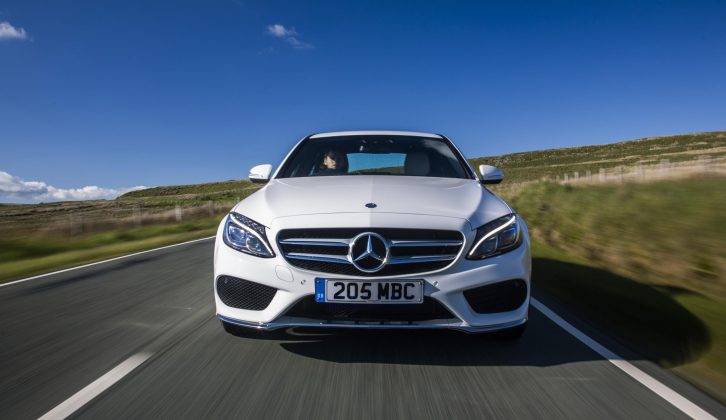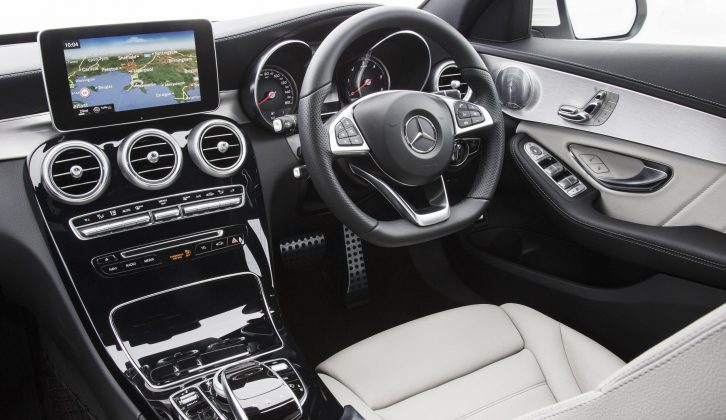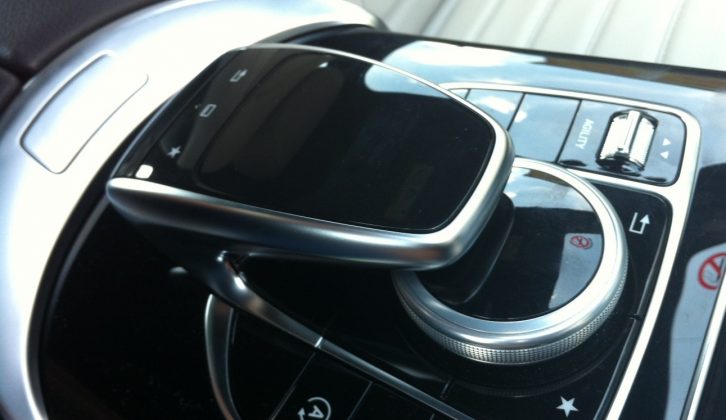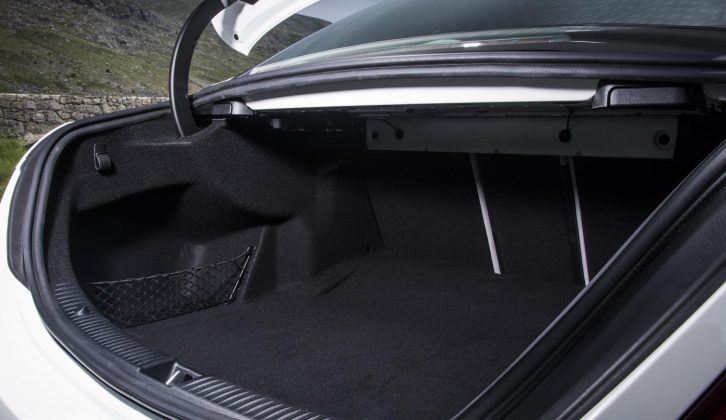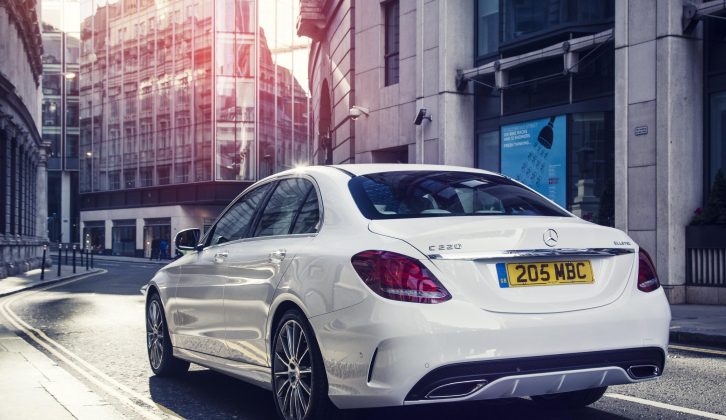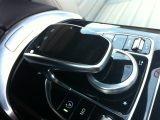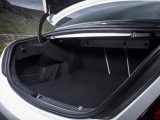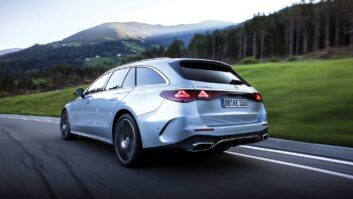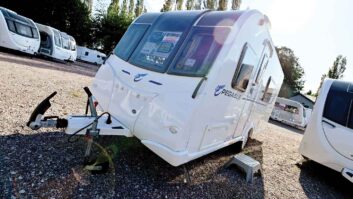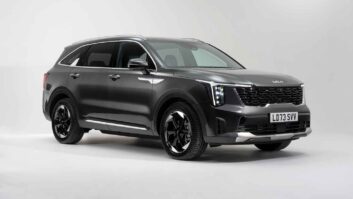A few weeks ago I took a classic car and caravan away for three days in the Peak District, and found myself envying another caravanner’s 1961 Mercedes-Benz. I wonder what the owner of that old car would make of the new Mercedes-Benz C-Class?
Having spent the past week with the new Merc, I’m guessing he’d have mixed feelings about it. In the specification I’ve been driving it’s a frustrating mixture of good and bad, although it certainly has potential as a tow car, as I’ll explain in this Mercedes-Benz C-Class review.
The good? It has a cabin which serves notice to Audi and BMW – you need to up your game. It’s beautifully designed and finished, from the metallic air vents to the worked metal of the stereo’s volume control, the C-Class looks and feels like a shrunken S-Class limo.
There’s acres of space for those travelling in the front: unless you duck for every doorway there’s no need to have the driver’s seat all the way back to find a comfortable position. Only the touchpad control, which arches over the rotary controller and adds unnecessary complication to using the sat-nav, stereo and other systems, seems a bad idea.
Rear-seat space is acceptable rather than generous, so adults will be a snug fit. With a large transmission tunnel splitting the cabin in two the C-Class makes a better fist of seating four rather than five. Boot space exactly matches that of the Merc’s key rival, the BMW 3-Series, at 480 litres, an important figure when reviewing any car with caravanners in mind. There’s an estate version arriving in September if that’s not enough space.
I think the ’61 Merc owner would have been impressed with the on-paper emissions and economy of today’s C-Class. I’ve been driving the C220 BlueTEC, the best-selling version, fitted with a seven-speed automatic gearbox. Carbon dioxide emissions of 113g/km mean the car sits in Band C for Vehicle Excise Duty. That means there’s nothing to pay in the first year, then an annual bill of just £30 at the current rate.
The official combined figure is 65.7mpg. However, after a week of solo driving on all kinds of roads the trip computer suggests the car has achieved closer to 45mpg, a big difference from the fuel economy quoted in the brochure – I wonder what it would be like when towing.
The C220’s 2.1-litre engine has enough power (168bhp) and torque (295lb ft) to comfortably pull any suitably matched caravan, but it sounds a little gruff when accelerating. For the record, a 1570kg kerbweight gives an 85% match figure of 1335kg. The legal towing limit of this car is 1800kg and the maximum noseweight is 75kg.
Firm suspension means the C-Class should make a stable tow car, but I’ll bet that 1961 Mercedes rides more comfortably than today’s C-Class, certainly on the lowered sports suspension and low-profile tyres fitted to our AMG Line test car. At low speeds the car jostles and jolts, picking a fight with every bump in the road. Things smooth out to some extent at higher speeds, but it’s still a little too firm for comfort.
It does mean the C-Class drives well on a twisting road, with strong body control and reassuring grip. But driven at moderate speeds the set-up feels too biased towards sporty cornering over smoothing out the road.
Air suspension is an option at £895, and allows the driver to fine-tune the way the car drives for better bump absorption or more aggressive cornering. Colleagues who have driven cars with this option fitted say it improves the C-Class considerably. But then, should you have to spend the thick end of a thousand pounds to improve the ride and handling of a car which costs £34,355?
Perhaps a more affordable model than the high-spec AMG Line, but with air suspension, would show the C-Class in a more positive light, and make it more of a contender when wondering what tow car to consider next.
The Mercedes' cabin is beautifully designed and finished
